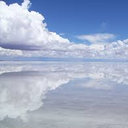Effects of three types of Japanese honey on full-thickness wound in mice.
Słowa kluczowe
Abstrakcyjny
Although many previous studies reported that honey promotes wound healing, no study has examined the effects of Japanese honey. The aim of this study was to investigate the effects of three types of Japanese honey, Acacia, Buckwheat flour, and Chinese milk vetch honey, on wound healing in comparison with hydrocolloid dressing. Circular full-thickness skin wounds were produced on male mice. Japanese honey or hydrocolloid dressing was applied daily to the mice for 14 days. The ratio of wound area for the hydrocolloid dressing group increased initially in the inflammatory and early proliferative phases and then decreased rapidly to heal with scarring. However, the ratios of wound area for the Japanese honey groups decreased in the inflammatory phase, increased in the proliferative phase, and decreased in the proliferative phase, and some wounds were not completely covered with new epithelium. These findings indicate that using Japanese honey alone has limited benefit, but since it reduces wound size in the inflammatory phase, it is possible to apply a combined treatment in which Japanese honey is applied only in the inflammatory phase, followed by hydrocolloid dressing from the proliferative phase, which would effectively contract the wound.


